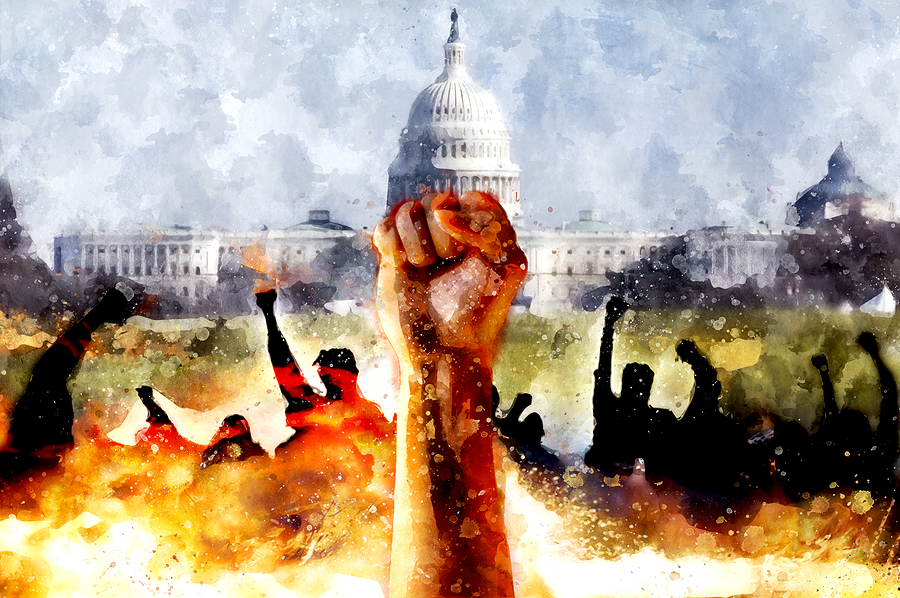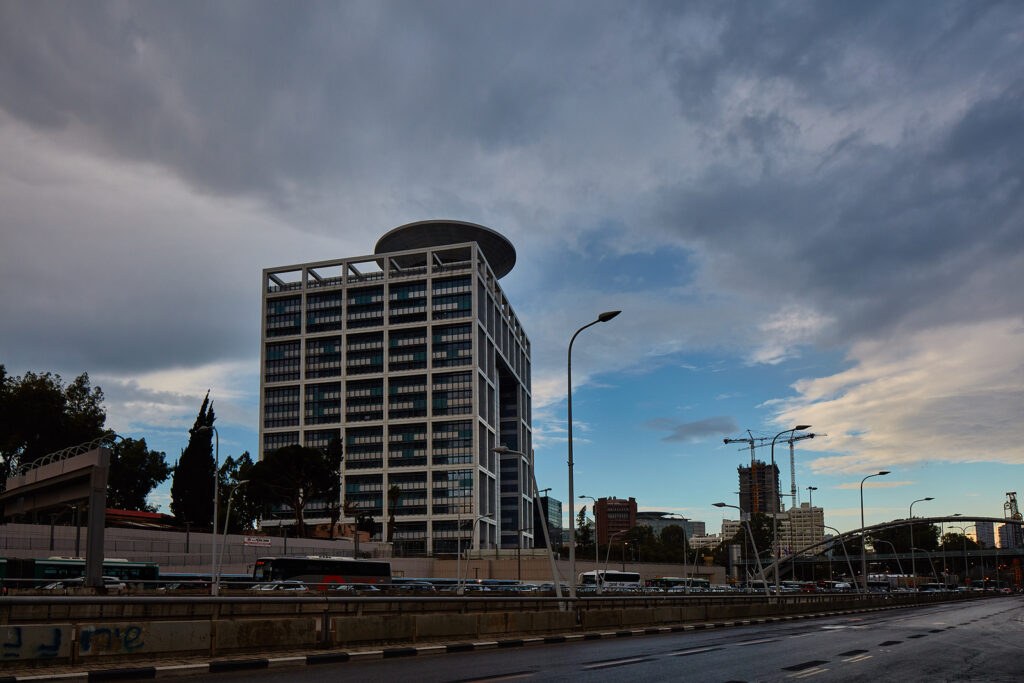Since the founding of the Islamic Republic, Iran has assumed the role of a revisionist power seeking to remake the Middle East in its authoritarian image. Iran aims to establish its sphere of dominance extending from the Zagros Mountain range to the Mediterranean, into the Red Sea on its western flank and through Pakistan and Afghanistan on its east. Although it may not seek direct rule over every inch of this territory, it does want all states in this sphere to be subordinate to Tehran, and for Shia Islam to eventually become the sole custodian of the holy places of Islam. In this vision, Israel would cease to exist. The realization of this vision would make Iran the regional hegemon and place it in control of a significant portion of the world’s energy, including critical waterways for international shipping, making it an invaluable strategic partner for China and Russia in their bid to upend the US-led world order. This is the vision to which Iran is committed and toward which it has made great strides in the past two decades. Its progress toward this goal constitutes the strategic setting for current war.
Putting Gaza in Context
To pursue these strategic ends, Iran acts to project power and influence opportunistically, extending its reach anywhere there is a power vacuum and the presence of Shiite populations which it can sway to its cause, or even Sunni Islamists, given the appropriate circumstances. It then uses this power and influence in order to target the regional forces who stand in the way of it realizing ideological and geopolitical hegemony. These are primarily Saudi Arabia, the UAE, Israel and the US military presence in the region. While Egypt could pose a challenge to Iran, it is located at the periphery of the region Iran seeks to dominate, and so targeting Egypt has not been a priority for Tehran. Jordan would as well, except that it is not powerful enough to pose a significant threat; should the larger powers fall to Iran, then Jordan will easily fall under Tehran’s thumb regardless.
Iran’s mode of operation stems from its awareness of its own relative weakness in conventional military terms against more powerful adversaries. Therefore, it seeks to avoid direct conflict with them and instead to act through proxies. The strategy of proxies is also used to maintain plausible deniability and thereby avoid accountability for actions that Iran facilitates.
Since the toppling of the Baath regime in Iraq in 2003, Iranian influence has expanded gradually, growing from Iraq into Syria, Lebanon and Yemen.[1] While the tactic of supporting like-minded radicals has been part of Iran’s strategic thinking for decades, only in the past 20 years has it begun to succeed and effect widespread change across the Middle East. It uses proxies to threaten the security of its adversaries in a way that grants Tehran itself impunity, as such proxies are supposedly independent actors, not operating from Iranian territory or under the Iranian flag. By supporting various terrorist groups and militias with training, funds, technological knowhow, and actual weapons, Iran has placed itself on the road to realizing its grand vision for the region.
Iraq is the first and most central focus of Iranian foreign activities, as it is the key gateway to broader influence to Iraq’s west and south. Iraq served as a proof-of-concept between 2003-2011, during which the IRGC (Islamic Revolutionary Guard Corps) empowered sympathetic third-parties with training and weapons.[2] By the time of the withdrawal of the majority of US forces from Iraq in 2011, Iran had established significant levers of influence over Iraq’s political, security and media actors. The Iran-backed militias have become more politically active and are wealthier and more militarily capable than the other militias active in Iraq. Through all these efforts, Iran has prevented the Iraqi state from maintaining a monopoly on the legitimate use of force in its territory, and as a result, Tehran has become highly influential in Iraqi political, economic and security affairs.
When the period of instability began in Syria in 2011, Iran considered it a strategic imperative to intervene in order to keep the Assad regime in power. In 2012, Iran took an active role in the Syrian civil war, beginning with small advisory teams and training units tasked with ensuring regime survival and control of major urban centers. These aims later grew to include the establishment of a network of militias in Syria loyal to Tehran, designed to pursue Iranian interests and to pose a direct threat toward Israel by entrenching a presence in Southern Syria.[3] These steps served to strengthen Iran’s hold on Syria against two rival regional axes: Sunni Islamism supported by Qatar and Turkey and Arab traditional monarchies led by Saudi Arabia and the UAE.
As part of its intervention, Iran established an air-transport corridor to Syria in which the IRGC flew civilian and military aircraft to bring in advisors, munitions, and UAVs to its militias.[4] The turmoil of the 2000s in Iraq and the 2010s in Syria also presented the prospect to realize an Iranian land-corridor from Iran, crossing through Iraq, Syria, and Lebanon to the Mediterranean. Much of Iran’s opportunity was created by third-parties who have eroded the authorities of the previous regimes in Iraq and Syria, resulting in the expansion of Teheran’s strategic reach through the Arab world and into the Eastern Mediterranean.
A crucial turning point occurred in 2015 with Russia’s decision to intervene in support of Assad and to cooperate with Iran in Syria both strategically and operationally. Russia’s relationship with Iran had long been one of pragmatic cooperation alongside deep suspicion and mutual ideological tensions. The tensions remained, but the strategic imperative of cooperation ultimately overcame distrust. Russia would provide the airpower and ISR capabilities that Iran lacked, and Iran would contribute personnel from the Shiite militias who could capture and hold territory.[5]
Although Iran has since drawn down the vast number of foreign fighters in Syria, its intervention has placed it on an entirely different footing in that arena. Because of Iran’s crucial role in ensuring the survival of the Syrian regime, that regime is now beholden to Iranian influence to an extent that it never was previously. Iran’s cooperation with Russia in Syria also laid the basis for the current bilateral cooperation in Ukraine, which in turn has also made Russia more considerate toward Iranian interests in Syria.
However, no other proxy is more important to Iran, or more closely aligned ideologically, than Hezbollah. Decades of Iranian investment have transformed Hezbollah from a small guerilla force to a non-state political actor with conventional military capabilities which include a vast rocket, missile and UAV arsenal, as well as a network capable of conducting terror operations abroad.[6] It has also become the dominant force in Lebanese politics and security policy, and serves as mentor to additional Iranian proxies throughout the Middle East.
Thanks to Iran’s assistance, Hezbollah has, since 2006, evolved along multiple dimensions. Its rocket and missile arsenal has grown from approximately 12,000 in 2006 to 150,000 today.[7] The missiles in its arsenal are more precise and of much longer range, while Hezbollah’s fighters have gained proper military experience through fighting in Syria. Its manpower further grew with recruitment of tens of thousands of additional operatives.
Finally, Hezbollah’s value to Iran extends throughout the region by way of its assistance in the management and mentoring other proxies, especially other Arab militias — the Houthis in particular. It has hosted proxy leaders, provided basing in Lebanon, financial assistance, and military training.
In the first decade of the 2000s, Iranian support for the Houthis was limited, but as the Houthis’ success grew, so did Iran and Hezbollah’s support for the movement. This assistance began with small arms shipments and expanded into funding, weapons and training, all of which played an important role in the Houthi takeover of Sanaa in 2014. Within a year, the Houthis controlled significant parts of Yemen, including multiple ports, and have since acquired extended range ballistic missiles, UAVs, sea mines and more, which they have used to attack strategic infrastructure in Saudi Arabia and the UAE, conduct targeted assassination attempts, and threaten Israeli shipping and international commerce in the Red Sea.[8]
This mode of terrorist sponsorship is the strategic setting for the Hamas attack on October 7th. The Iran-Hamas relationship is not based on shared theology, but arose for pragmatic reasons. The common goal of eradicating Israel has been sufficient for Iran to provide Hamas with approximately $70 million dollars per year, alongside training and weapons.[9] Hamas would never have been able to undertake the atrocities of its attack on October 7, 2023 without the decades of assistance from Iran.
Thus, while Gaza is currently the most intense battlefront, and completing the war aim of eradicating Hamas rule from the strip is absolutely necessary, it would be a grave mistake to view Israel’s current war as being primarily with Hamas. Israel’s greatest strategic threat, who it must plan to counter and over whom it must ultimately prevail, remains the Islamic Republic of Iran, without whose support neither Hamas nor Hezbollah would be in the current position to threaten Israel’s national existence.
What Can be Done to Bring the Shiite Crescent Into a ‘Lunar’ Eclipse?
Iran’s regional policy has been quite effective in leveraging the country’s strengths, despite its meager economy, regime instability, and lack of conventional military power. Though its progress toward realizing the Shiite crescent of dominance has been great, its success is not irreversible. It can be countered by a regional alliance led by Israel and the Gulf States, with backing from the United States. This, however, would require a decision on the part of Washington to abandon its attempts to come to a grand accommodation with Iran, and instead return to a policy of maximum pressure on all fronts.
Decisive military action against Hezbollah and Houthis. As Hezbollah is the most important Iran-backed militia in the axis, degrading it significantly would constitute a major blow to Iran’s ability to continue to threaten Israel and the region while shirking the blame. The heightened and immediate threat that Hezbollah now poses to Israel has brought it to a point where Israel is now poised to take overwhelming military action against the group. Israel must be supported in this action through the provision of weapons and diplomatic backing to implement UNSCR 1701, which already mandates disbanding and disarming all militias in Lebanon, including Hezbollah.
The Houthis have been an acute threat to the Gulf states for nearly a decade, but have only more recently emerged as a significant threat to Israel and to international trade and energy markets. A short military campaign with cruise missiles from the sea and precision guided missiles from the air would suffice to devastatingly degrade their capabilities built up over the past decade.
Economic sanctions on Iran. In the early 2010s, an unprecedented level of economic sanctions was imposed on Iran in order to pressure the regime by devastating its national economy at a macro level.[10] This inflicted considerable damage without firing a single bullet, which in turn forced Tehran to make difficult decisions and had the potential to threaten regime stability. The problem is that the sanctions were not maintained consistently at this high level for very long. During the nuclear negotiations in 2013, the US let up on some of the pressure, and with the implementation of the JCPOA in 2015, let up altogether, with the promise that if Iran violated the terms of the agreement, then these sanctions would be “snapped back.”
The nuclear negotiations made the mistake of disconnecting the nuclear issue from Iran’s regional actions, thereby playing directly into Iran’s hands. By progressing in the nuclear realm and then offering to halt further progress as a concession, Iran received a pass for the continued investment in its regional terror axis. However, building and maintaining this axis requires funding, and placing Iran under tremendous economic pressure is one important step capable of limiting Tehran’s ability to bankroll its regional influence. Sanctions were returned over the last two years of the Trump administration, but were only in full effect for a brief period, and are currently not being enforced, as President Biden has not made the decision to pursue economic pressure as a key element of the current strategy for containing or confronting the Iranian threat.
Target IRGC directly. The Islamic Revolutionary Guard Corps (IRGC) is the main facilitator of the Iran-backed militias across the region. Iran should not be granted immunity for actions facilitated by the IRGC terror network. The assassination of Soleimani in 2020 dealt a major blow to the IRGC and its regional efforts. The current Quds Force head, Esmail Ghaani,[11] should be targeted, alongside the deputies tasked with carrying out his orders. IRGC economic support structures should be exposed, sanctioned, and sabotaged. The IRGC maintains separate sources of income in the Iranian economy, often through illicit activities, and these too should be targeted so that they do not escape the brunt of the macro-economic pressure.
Support regime opponents. The Iranian regime has seen waves of instability recently, with protests breaking out throughout the country every few years, particularly since the 2009 “green revolution.” Tehran has thus far succeeded in countering this opposition, but the regime is under constant threat of losing control of some parts of the country. Therefore, in order to raise pressure on the regime, anti-regime groups should be supported directly. This can be done financially, politically, and by giving them a broader platform in the international media.
Military strikes against supply lines to proxies. Israel has been waging an intense military campaign against Iranian arms shipments destined for Hezbollah and other militias. The center of gravity has been in Syria, but it has not been limited to this arena.
Credible threat against Iran’s nuclear program. Finally, a credible military threat against Iran’s nuclear program must be constantly maintained and updated. Current circumstances raise the question of whether a state that is determined to attain nuclear weapons can ever be stopped, with the case of North Korea serving as an example of a failure to prevent such an outcome. On the other hand, the case of Iraq, Syria and Libya provide examples of successful counter-proliferation, by military strikes in the first two, and by the implicit threat of military intervention in the third. This suggests that the only policy that can prevent a determined proliferator from going nuclear is a willingness to use force. However, a coercive sanctions regime, coupled with a credible threat of force and a clear red line can have the effect of weakening a proliferator’s determination and willingness to attempt to cross the threshold.
This is in fact the difference between North Korea and Iran. In the case of North Korea’s nuclear program, neither the United States nor South Korea was willing to issue a credible threat of a counter-proliferation strike. For Iran, on the other hand, it faced such a threat first in the 2000s from the United States, after the invasions of Afghanistan and Iraq, and in the 2010s from Israel. Thus, the only factor which has prevented Iran from crossing the threshold toward attaining a nuclear weapon over the past 20 years has been the credible threat posed in response to any attempt to do so.[12]
However, Iran has made gradual progress and continuously approaches the threshold, while the US has attempted outreach and diplomacy in the past few years and neglected the importance of a military option. If the White House is uninterested in declaring its own intention to execute a military option if necessary, then it could issue a clear statement that it will support an Israeli operation and provide Israel any capabilities it requires to complete a successful strike.
Would a Maximum Pressure Strategy Inevitably Drag the US Into a War with Iran?
Decisive action against Iran’s proxy forces would not only constitute a grave loss for Iran’s ambitions and halt the strategic trend of growing Iranian dominance, but I argue that it can be done without necessitating a full-scale war with the Islamic Republic itself, a scenario which the US currently seeks to avoid.
This is because, for Iran, regime survival is paramount, and it is acutely aware that the balance of power in a full-scale war with the United States is not in its favor. If the United States clarifies plainly that an escalation by Iran will force the US to respond with overwhelming force, then Tehran will choose to sacrifice its proxies before attempting a suicidal war with the US and Israel.
Iran still recalls the painful losses it suffered in the Iran-Iraq war, and the regime prides itself on having avoided sending Iranians to battle since then. The regime is also acutely aware of its domestic instability and lack of popular support, which would be exacerbated by a war (and the second-order effects a war would have on Iran’s population, particularly in the economic realm). To be sure, the Islamic Republic of Iran must ultimately be held accountable for its ongoing efforts to sow chaos and terror, but in the near term, cutting off its tentacles is a necessary and feasible first step.
Tehran is only willing to push the boundaries of aggression when it can attack its enemies through its Arab proxies while avoiding any direct retaliation against itself. However, historically speaking, any time the regime felt threatened directly, it has consistently turned to caution and sought to avoid escalation. A number of examples illustrate this pattern of behavior.
Most recently, after the assassination of Quds Force commander Qassem Soleimani by the US in January 2020, Iran responded by launching 16 missiles at 2 US bases in Iraq, resulting in some damage but no American casualties.[13] Supreme Leader Khamenei defined the purpose of the attack as “a blow to the dignity of the U.S. as a superpower,” meaning it was merely a symbolic retaliation.
Not long before this, when the Trump administration withdrew from the nuclear deal, adopted a policy of maximum pressure and began to reapply sanctions in 2018, Iran did nothing for a full year. When it attacked, ostensibly in response to Trump’s policies, it was in the form of a carefully calibrated strike on oil tankers and a Saudi oil pipeline, cautious progress in the nuclear realm, and an attack on Saudi oil refineries, which was certainly egregious, but ultimately designed only to prove a point, not to start a war.[14]
The last time Israel fought the Iranian proxy, Hezbollah, in 2006, Israel invaded Lebanon and brought vast destruction to local infrastructure and Hezbollah installations, yet Iran merely supported Hezbollah logistically and with strategic advice. It even eventually called for a ceasefire and conveyed messages to Hezbollah not to escalate beyond necessity.[15]
In 2003, against the backdrop of the American invasion of Afghanistan and Iraq and President Bush’s threats to continue the march on to Tehran, Iran froze its illegal enrichment of uranium and halted research into the military dimensions of its nuclear program.[16]
This pattern held even under the founder of revolutionary Iran, Khomeini, when in 1988, in response to an Iranian attack on an American destroyer in the Persian Gulf, the US launched a punitive operation, sinking three Iranian ships and destroying two oil drilling rigs. The US then offered a cease-fire, which Iran swiftly accepted.[17]
Thus, when the US has shown resolve and a willingness to exact a higher price than Iran is expecting for its aggressions, Iran has consistently chosen to stand down. The same dynamic applies in the current circumstances. A coordinated strategy between Jerusalem and Washington to apply maximum pressure on Iran is the only path to a prosperous and stable Middle East in the long-term.
photo Copyright: Borna from Bigstock
[1] For a detailed outline of this process see: The International Institute for Strategic Studies (IISS). Iran’s Networks of Influence In The Middle East, November 2019.
[2] Michael Knights, “The Evolution of Iran’s Special Groups In Iraq,” November 2010, Combating Terrorism Center – Sentinal, Volume 3, Issue 11. https://ctc.westpoint.edu/the-evolution-of-irans-special-groups-in-iraq/; Borzou Daragahi, “Badr Brigade: Among Most Consequential Outcomes of the Iran-Iraq War,” August 16, 2018, Atlantic Council. http://tinyurl.com/57duu3at; Michael R. Gordon and Ben Kesling, “Declassified Interrogation Reports Show How Much Iran Shaped Iraq War,” Aug. 30, 2018, Wall Street Journal. http://tinyurl.com/2p9kf56b.
[3] Hélène Sallon, “Iran’s latent front in Syria poses a real threat to Israel,” October 28, 2023, LeMonde, http://tinyurl.com/29vezc7z; Seth J. Frantzman, “Report reveals Iran’s growing threat to US, Israel from Syria – analysis,” July 23, 2023, Jerusalem Post. https://www.jpost.com/middle-east/iran-news/article-752105.
[4] Suleiman Al-Khalidi, James Mackenzie and Parisa Hafezi, “Exclusive: Iran exploits earthquake relief mission to fly weapons to Syria,” April 12, 2023, Reuters. http://tinyurl.com/y6xk7bxy; Paul Bucala and Ken Hawrey “Iran’s Airbridge to Syria,” July 13, 2016, Critical Threats Project at AEI. https://www.criticalthreats.org/analysis/irans-airbridge-to-syria
[5] Josh Rogin, “Soleimani’s death offers a chance to fix U.S. policy on Syria,” January 9, 2020, Washington Post, http://tinyurl.com/32w6k9ym
[6] Hadi Wahab, Hezbollah: A Regional Armed Non-state Actor (London, UK: Routledge, 2022).
[7] Oded Yaron, “150 Thousand Missiles and Rockets: Until Where Does Hezbollah Deadly Arsenal Reach” [Hebrew], 20.10.2023, Haaretz. https://tinyurl.com/ycx5xsxb
[8] Seth G. Jones, Jared Thompson, Danielle Ngo, Joseph S. Bermudez Jr. and Brian McSorley, “The Iranian and Houthi War against Saudi Arabia,” December 21, 2021, Center for Strategic & International Studies. https://www.csis.org/analysis/iranian-and-houthi-war-against-saudi-arabia
[9] Matthew Levitt, “The Hamas-Iran Relationship,” Nov. 2023, The Jerusalem Strategic Tribune. https://jstribune.com/levitt-the-hamas-iran-relationship/#99894097-4565-4e25-97fd-d523a7aeb1c6-link
[10] Raphael BenLevi, Cultures of Counterproliferation: The Making of US and Israeli Policy on Iran’s Nuclear Program, (London, UK: Routledge, 2023), 152.
[11] Jason M. Brodsky, Yossi Mansharof, “Soleimani birthed Iran’s Axis of Resistance, Ghaani coordinated it,” December 15, 2023, Middle East Institute. https://www.mei.edu/publications/soleimani-birthed-irans-axis-resistance-ghaani-coordinated-it
[12] BenLevi, Cultures of Counterproliferation, 212.
[13] US Department of Defense, “Transcript of Press Brief by Secretary Esper and General Milley,” Jan. 8, 2020, http://tinyurl.com/36zkwe47
[14] Suzanne Maloney, “Iran knows how to bide its time. Don’t expect immediate retaliation for Soleimani,” January 6, 2020, Brookings Institute. http://tinyurl.com/4whj2xp5
[15] Raphael Ofek and Pesach Malovany, “Iran Behind the Scenes During the Second Israel-Lebanon War”, The Begin-Sadat Center for Strategic Studies, November 2020, pp. 22–24; IISS, Iran’s Networks, 55.
[16] BenLevi, Cultures of Counterproliferation, 127.
[17] US Naval History and Heritage Command. “Operation Praying Mantis,” http://tinyurl.com/yr6wtdty.








